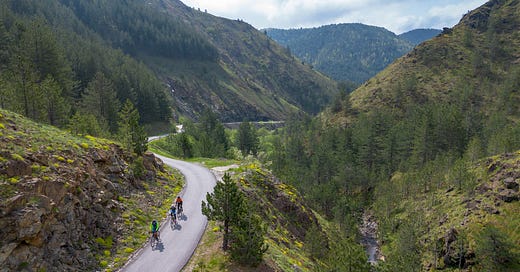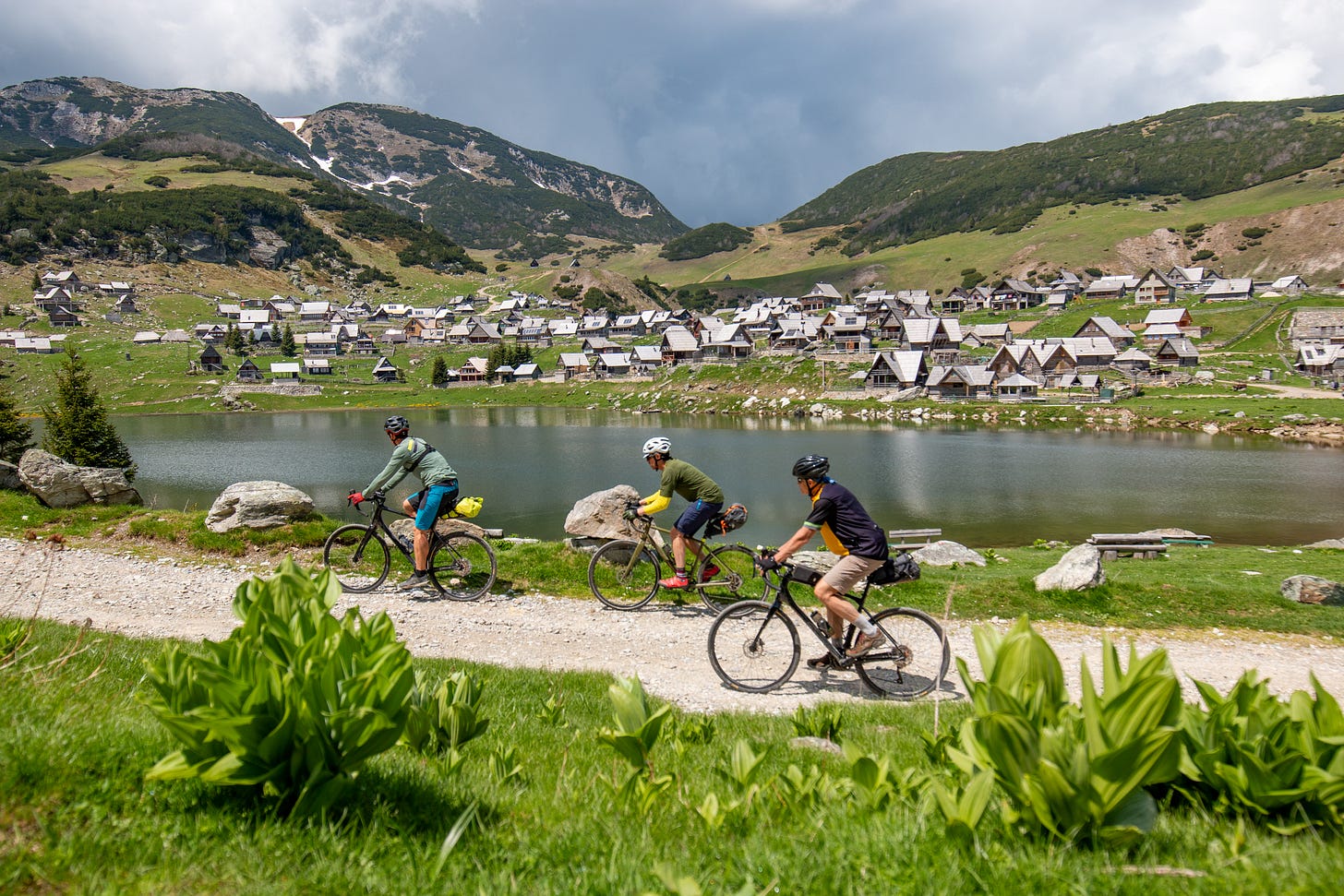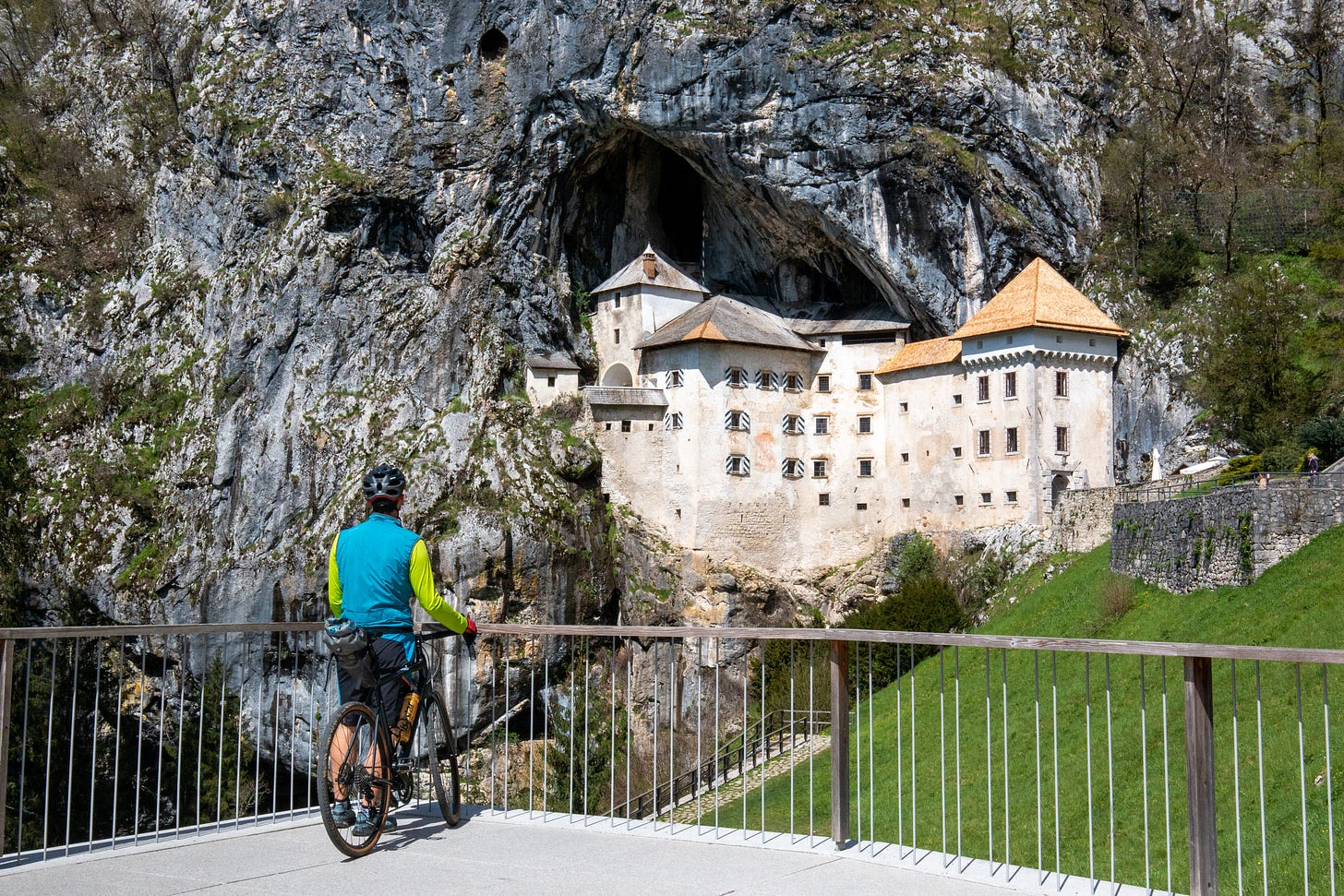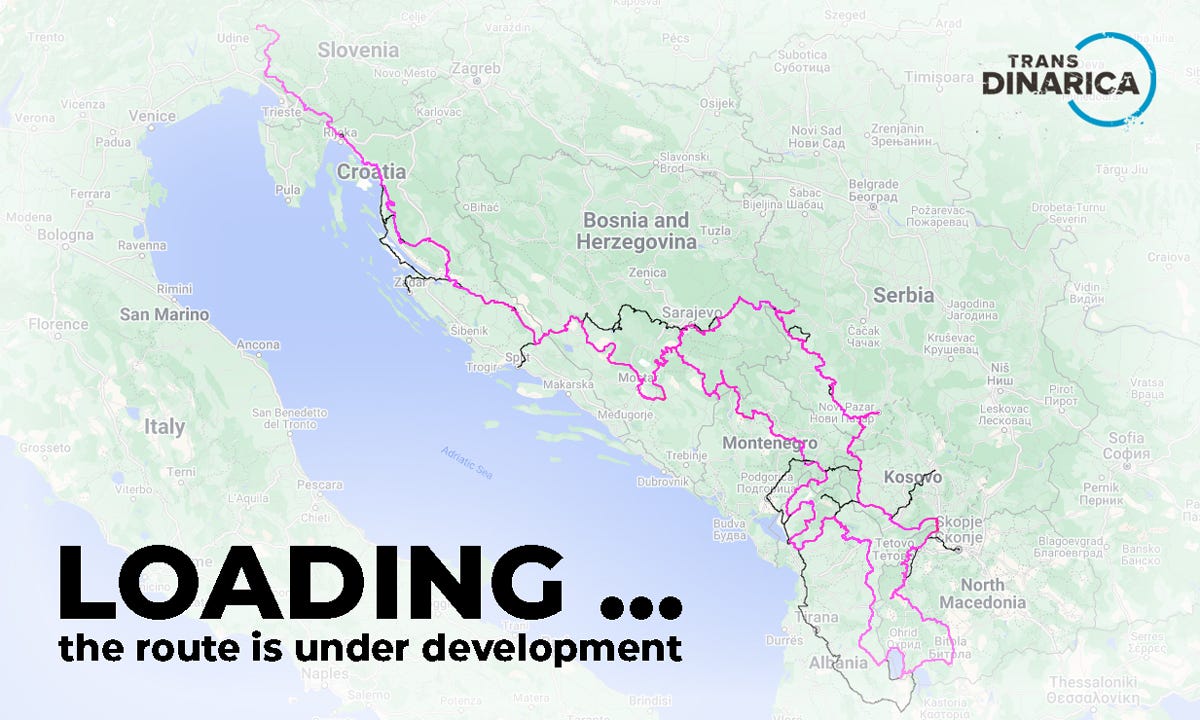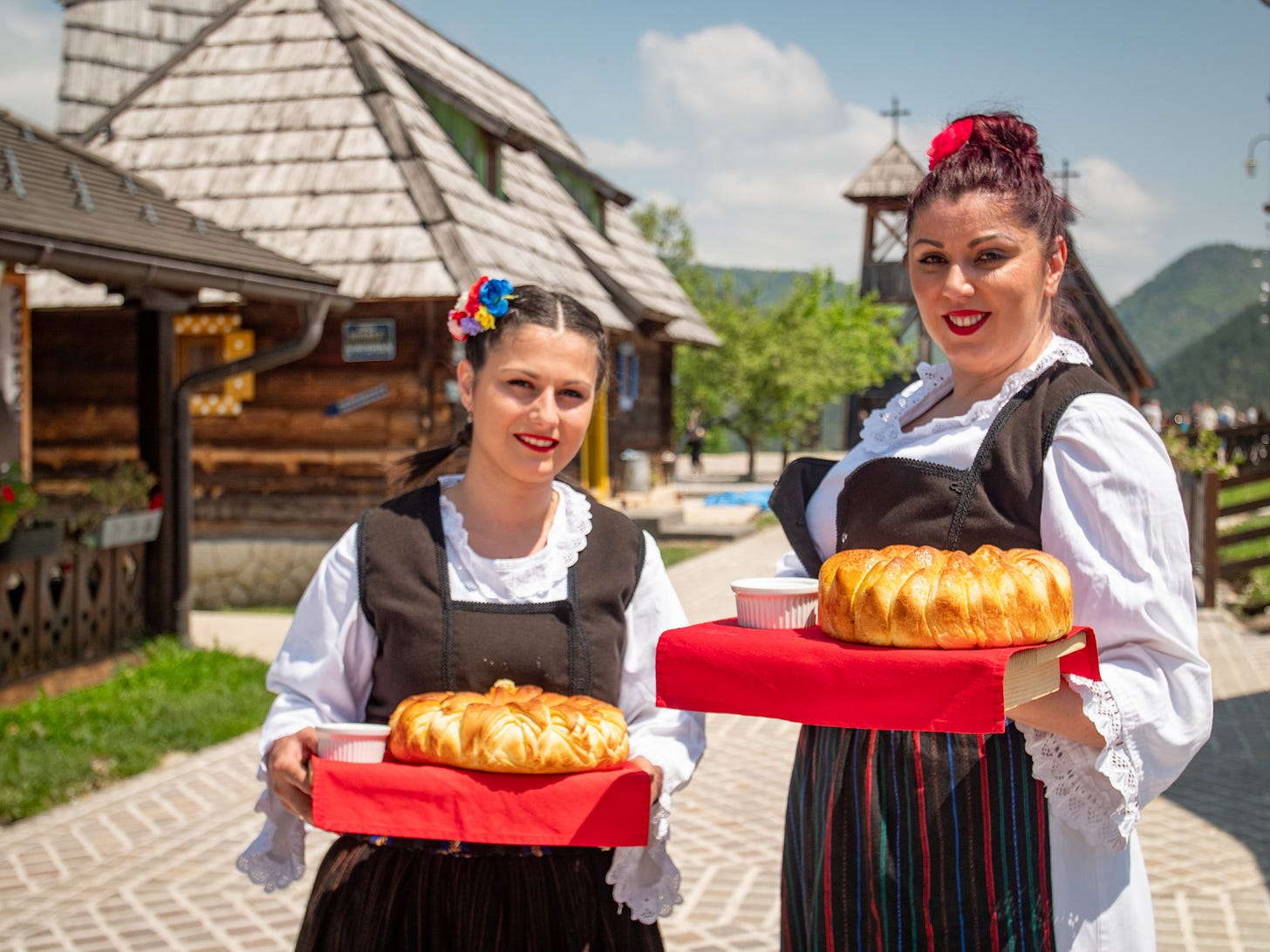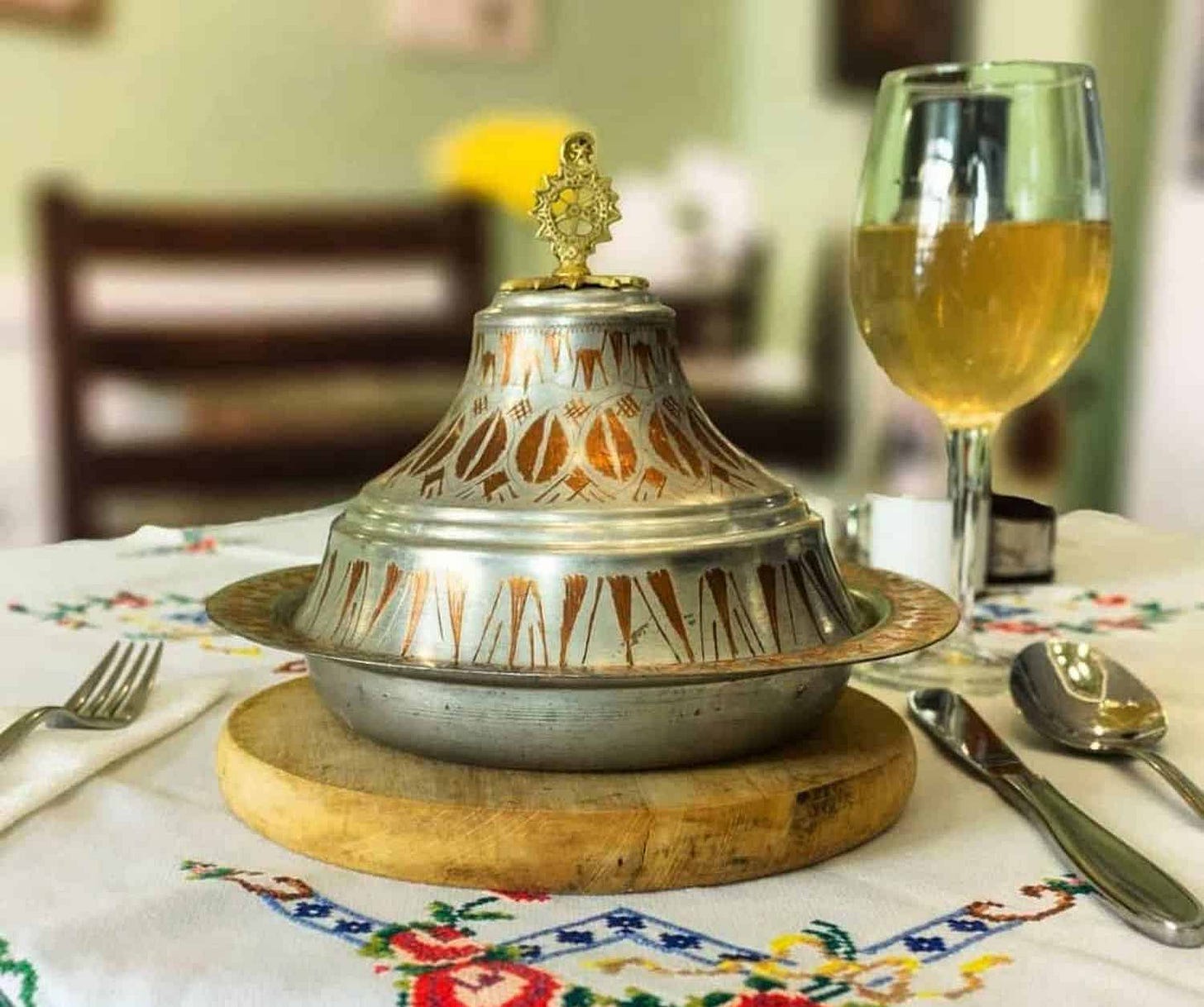S4E11. Two wheels, eight countries. One Route
One of the most ambitious slow tourism projects all over the world will be launched in 2024. The Trans Dinarica Cycle Route will connect all the Western Balkans countries for more than 4500 kilometers
Hi,
welcome back to BarBalkans, the newsletter with blurred boundaries.
A new beginning starts with a deep breath, a sip of water and a road opening up ahead.
And also a bike. Because we are set to embark on an entirely unprecedented journey, one of the most ambitious slow tourism projects all over the world.
The Trans Dinarica Cycle Route will be launched in 2024. This cycle route will connect all the Western Balkans countries following the Dinaric Alps, the mountain range that crosses the region from north to south.
Slovenia, Croatia, Bosnia and Herzegovina, Serbia, Kosovo, North Macedonia, Albania, Montenegro. Thousands of miles of a professionally designed route, that can be ride amidst natural wonders and the hospitality of local people.
Inflate your wheels, get your helmet on and take your bike. It is time to leave for the best travel destination of this new year!
A sustainable project
«We came with the idea of the Trans Dinarica Cycle Route about six years ago, but the real work began in late 2022/early 2023», Jan Klavora explains BarBalkans. He is the co-founder of GoodTrail, a team of experts in responsibly-focused tourism products.
Every idea needs support. And the Slovenian team’s intuition to create the first cycle route connecting all the Western Balkans countries has been supported by USAID’s Economic Development, Governance, and Enterprise Growth (EDGE) Project. «The creation of the route could not have started without this project», Klavora underlines.
In designing a cycle route «as doable as possible for intermediate-to-experienced cyclists», GoodTrail professionals did their best to include «as many important points of interest as possible» in all eight countries.
The result is a route «about 4,500 kilometers and 90 stages/days» long, connecting «small and large communities, whose combination exposes the region’s beautiful culture».
Read also: S4E3. Make haste slowly
The benefit is twofold. Cyclists have the opportunity to «really interact, up close, with this beautiful region», promoting a sustainable tourism. At the same time, rural communities - otherwise neglected - benefit from being involved in the cycle route.
The main challenge of the Trans Dinarica Cycle Route is the fact that «the cycling demands effort and some climbing». There will be paved and unpaved, winding and scenic roads. All the 90 stages will give the opportunity to discover all the shades of different cultures and the specialties of local gastronomy.
Everything is almost ready for the launch of the Trans Dinarica Cycle Route. The inauguration is expected in «late summer 2024» - Klavora confirms - when detailed navigation data will be available. The beta stage will allow cyclists to provide feedback to GoodTrail team, to be used to refine the route.
This is how a sustainable project can be finalized with all the necessary services. From GPS data sets, to information on accommodation and food services, but also signposts to allow cyclists to follow the route without smartphone support.
Read also: S2E32. Journey to extinguished countries
A Route through the mountains
Included in Lonely Planet’s list of ‘The Best Destinations to Travel in 2024’, the Trans Dinarica Cycle Route «will connect hundreds of places», points out the responsible of its development: «Villages, towns, cities, national parks, nature reserves, UNESCO sites and communities across the Western Balkans».
The main challenge was to «create a route that incorporated both remote, often-overlooked places, and making sure there was enough infrastructure to support those discoveries».
The result will be tested soon. But for now, it is inspiring to start this journey through our minds.
Read also: S3E1. A travel diary
The route starts in Slovenia, in the western region of Posočje (on the Italian border) among the Julian Alps. We head south, following the course of the Soča River and cycling through the vineyards of Goriška Brda wine region. After Karst Biosphere Reserve and Škocjan Caves (Slovenia “Grand Canyon”), we arrive in Croatia.
At the foot of the Dinaric Alps, the route leads us to the city of Rijeka, the gateway to the Croatian islands, and continues to Paklenica National Park. After the city of Split - where Diocletian’s Palace from 305 A.D. is worth a stop - we head east to the Bosnian border.
Entering Bosnia and Herzegovina, we cycle towards Mostar and the astonishing Ottoman Stari Most (the Old Bridge). The road forks at Mount Bjelašnica: a ring route will bring us here again. We head north to the capital Sarajevo, nestled in the Miljacka River valley.
After crossing Eastern Bosnia, we reach the banks of the Drina River and we enter Serbia. The coniferous forests of Tara National Park guide us southwards. Novi Pazar is a must-see, with its minarets, the Church of Saints Peter and Paul, and the Sopoćani monastery (on the UNESCO World Heritage List).
The road leads toward the border with Kosovo (just an administrative line for Serbian authorities, as they do not recognize Kosovo independence). In the western regions of the country, we pass through Valbona National Park and the town of Gjakova. After a stop in Prizren - the “City of Lilies” with its Ottoman and Byzantine-style buildings in the old town - we follow the Dynamic Alps and the Šar Mountains.
In North Macedonia, the route passes through remote mountain villages (with great culinary variety) and Mavrovo National Park, home to the last indigenous Balkan lynxes. All the way to the southernmost point of the Trans Dinarica Cycle Route, from the mountains of Galičica National Park we enjoy the breathtaking view of Lake Ohrid, one of the oldest and deepest lakes in Europe.
We cycle along the banks of Lake Ohrid until the border with Albania. The compass points north, to the largest lake in the Balkans: Lake Shkodra, surrounded by karst mountains and rocky coastal areas with an extraordinary biodiversity. The winding road ends at the border with Montenegro.
Following the mountain range northwards, we discovers many natural wonders: from the Tara River Canyon (the deepest gorge in Europe) to the forests of the Durmitor National Park and Trnovačko Lake on the Bosnian border.
The road veers northwest. We stop at Sutjeska National Park to visit its impressive spomenik, before reaching the crossroad at Bjelašnica where the ring route ends. Back again toward Mostar and Croatia, we complete the final stretch of the Trans Dinarica Cycle Route, until the starting point in western Slovenia.
Read also: S3E9. The legend of fraternal Spomeniks
«The region is ready to welcome cyclists, and all the places where the route stops have the necessary infrastructure for adventure travelers», product developer Klavora let BarBalkans readers know.
Pit stop. Sittin’ at the BarBalkans
We have reached the end of this piece of road.
Following the Trans Dinaric Cycle Route, today our bar, the BarBalkans, makes a stop at one of the best places to refresh ourselves after a busy trip on two wheels.
The co-founder of GoodTrail recommends us Žara iz duvara, a restaurant in the center of Sarajevo that «serves traditional dishes made with natural ingredients».
And - while the bikes are leaning on racks and conviviality fills the room - where we can taste «great homemade rakija», Klavora recalls.
Let’s continue BarBalkans journey. We will meet again in two weeks, for the 12th stop of this season.
A big hug and have a good journey!
If you have a proposal for a Balkan-themed article, interview or report, please send it to redazione@barbalcani.eu. External original contributions will be published every last Friday of the month in the Open bar section.
Your support is essential to realize all that you have read. And even more.
A job well done needs many hours and energy. Also to keep BarBalkans newsletter free for everyone and to make it an increasingly original product, with new ideas, interviews and collaborations.
An independent project like this cannot survive without the support of the readers. For this reason, I kindly ask you to consider the possibility of donating:
Every second Wednesday of the month you will receive a monthly article-podcast on the Yugoslav Wars, to find out what was happening in the Balkans - right in that month - 30 years ago.
You can listen to the preview of The Yugoslav Wars every month on Spreaker and Spotify.

